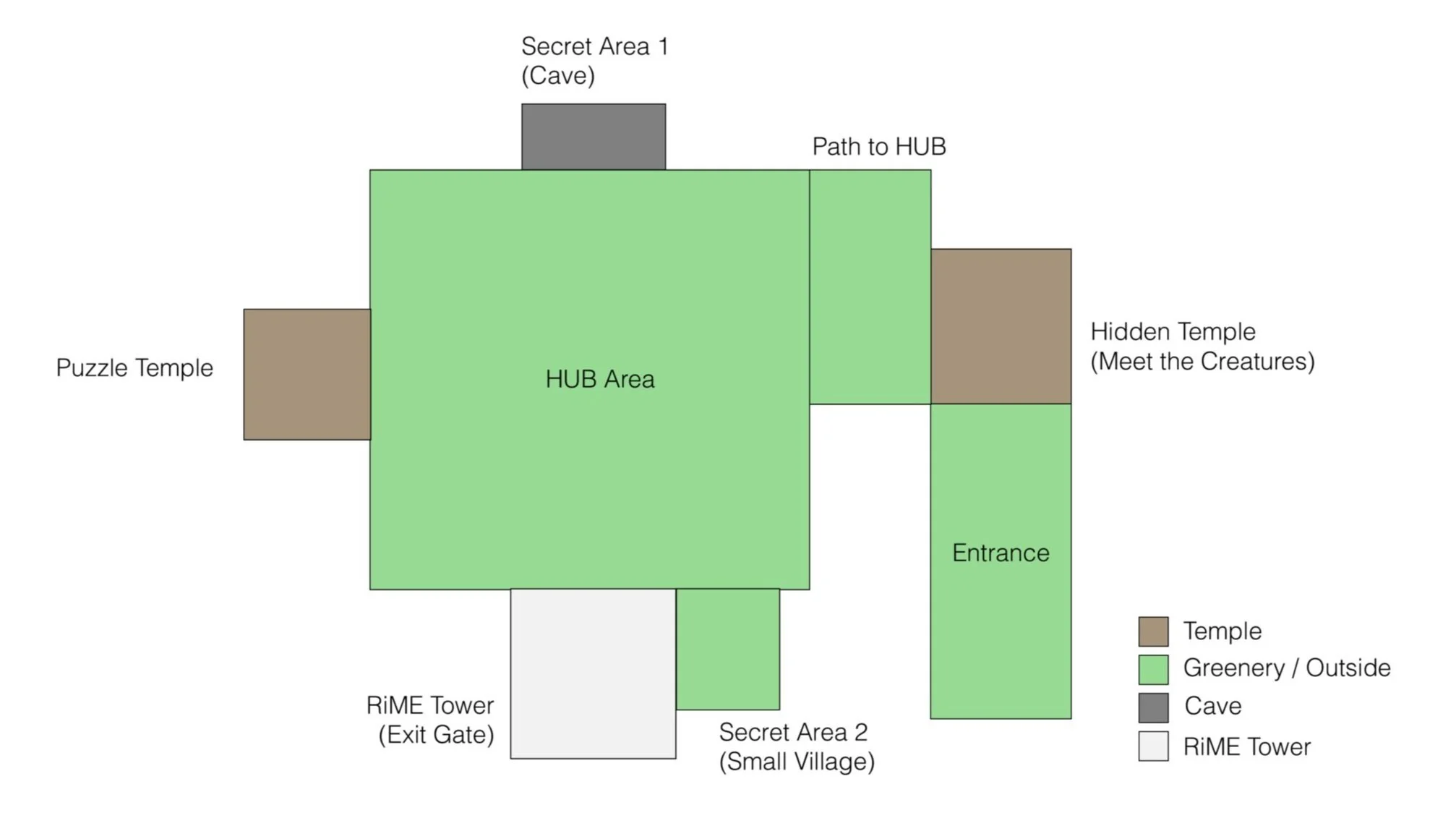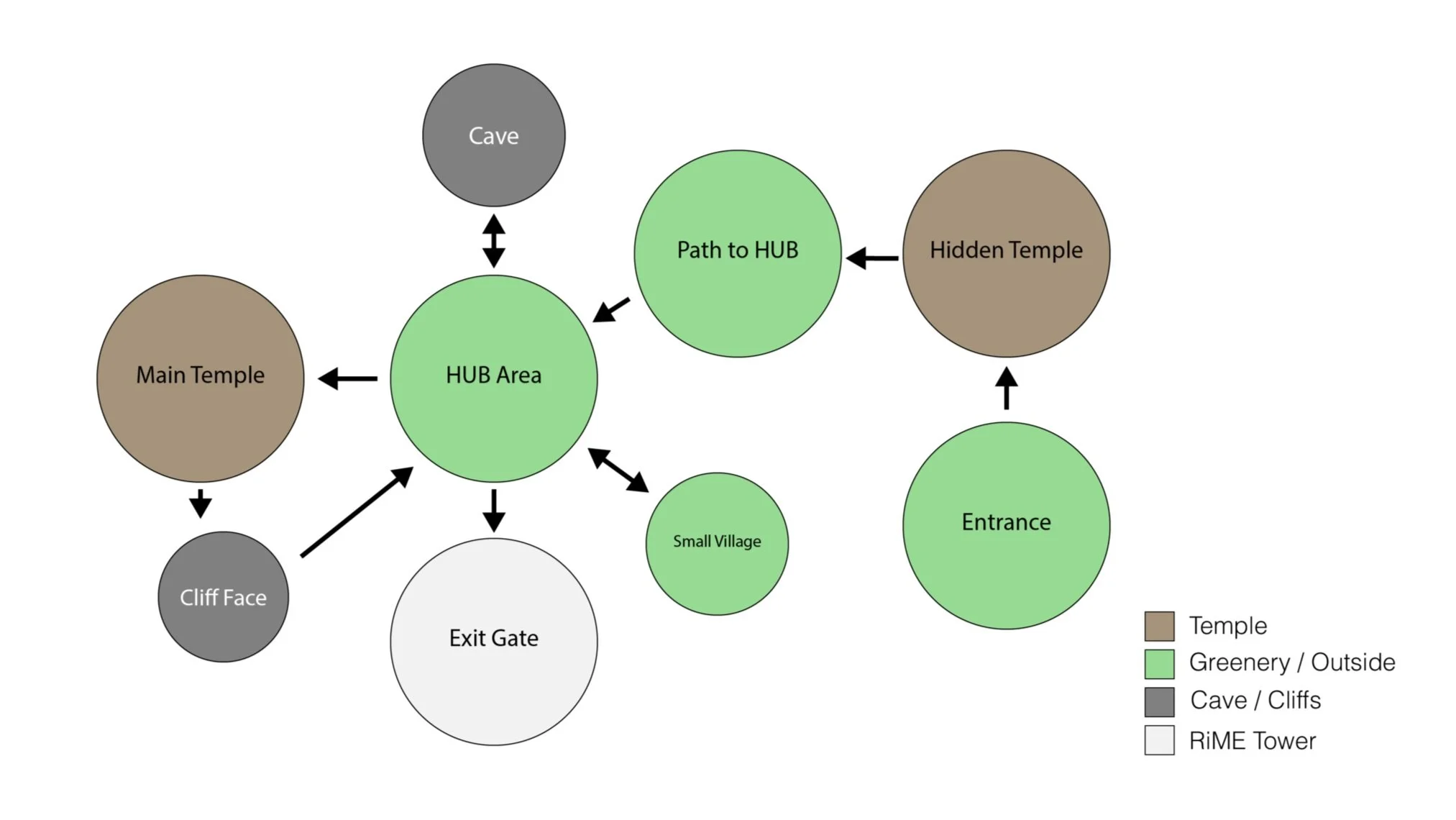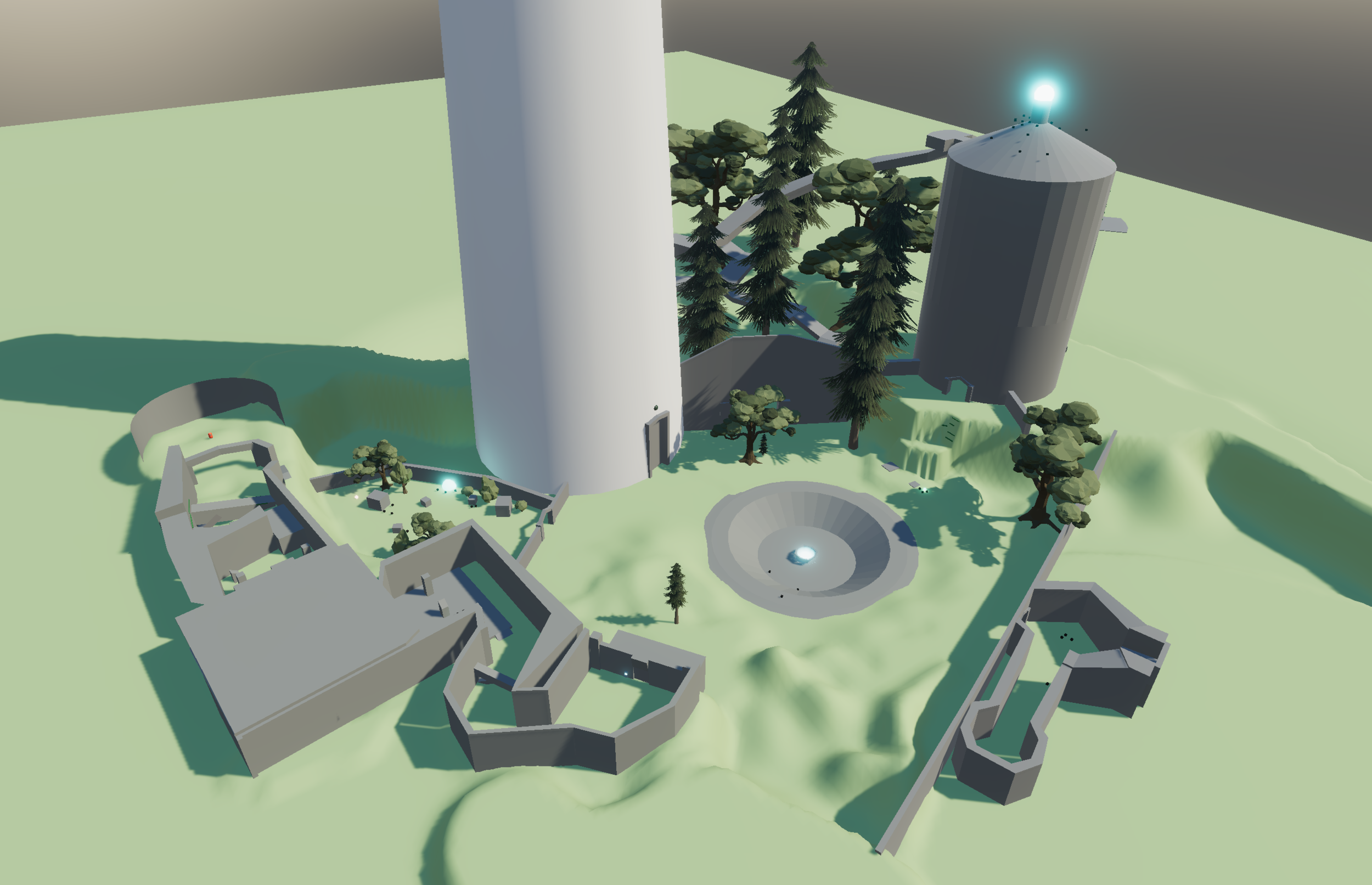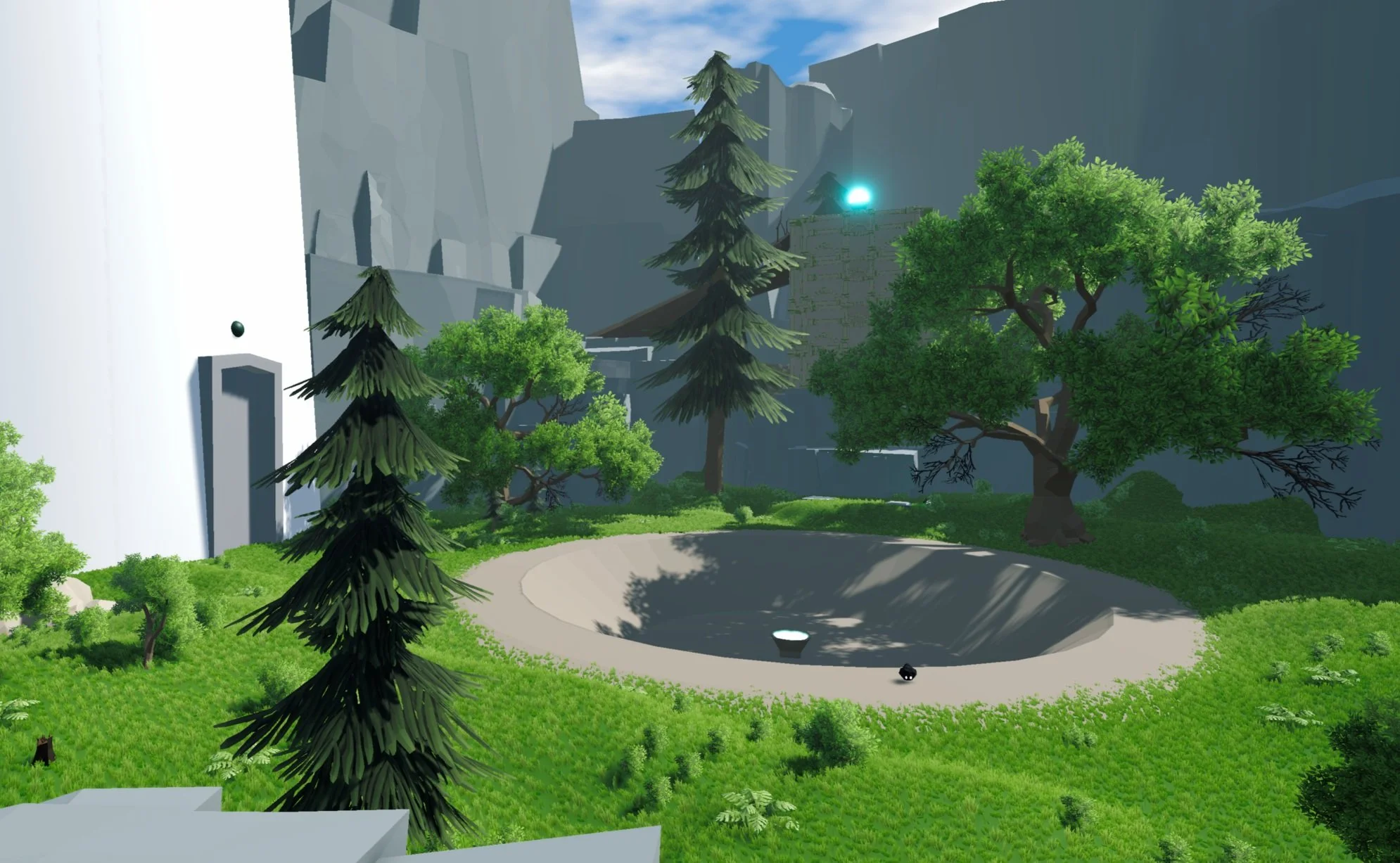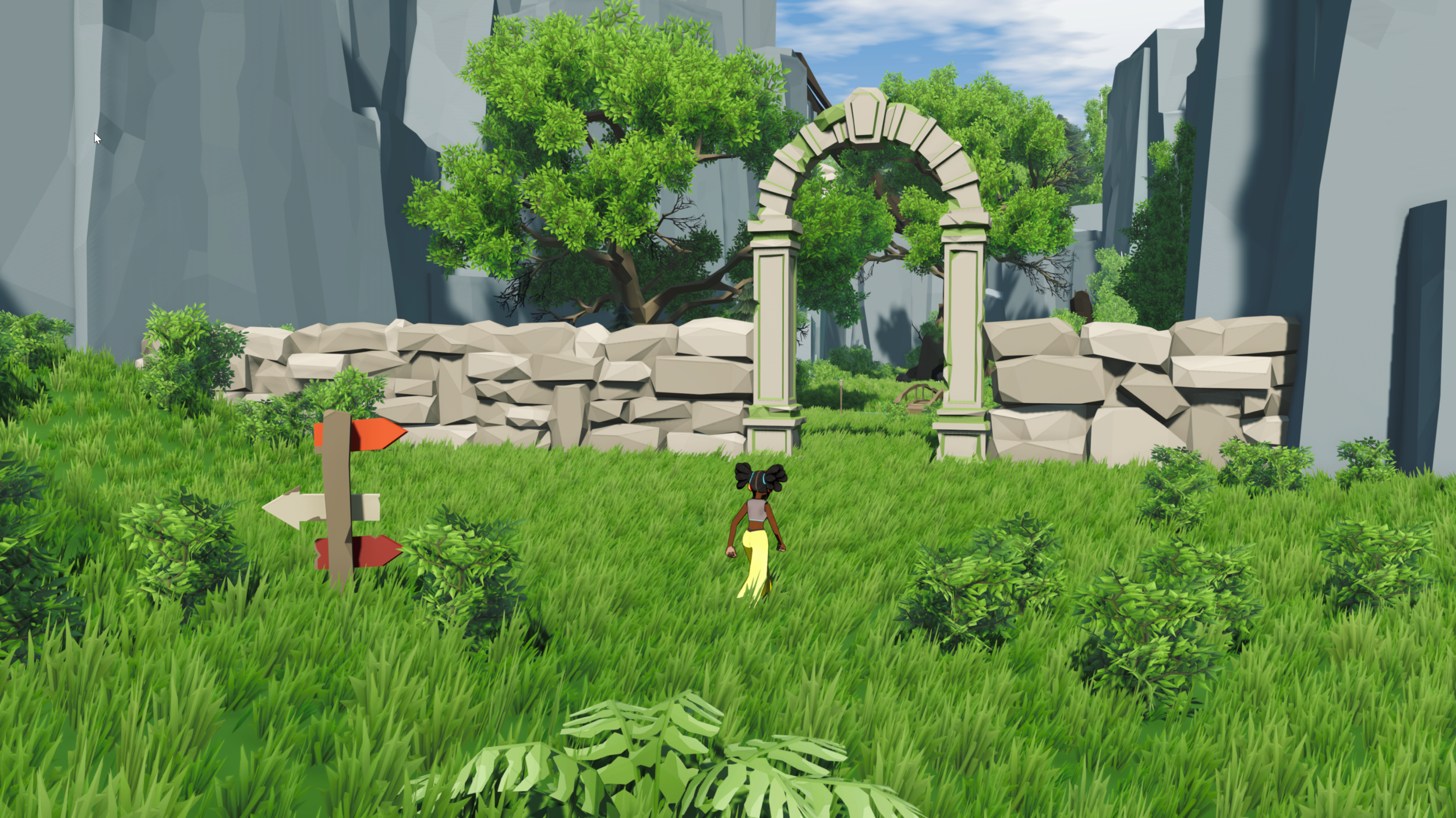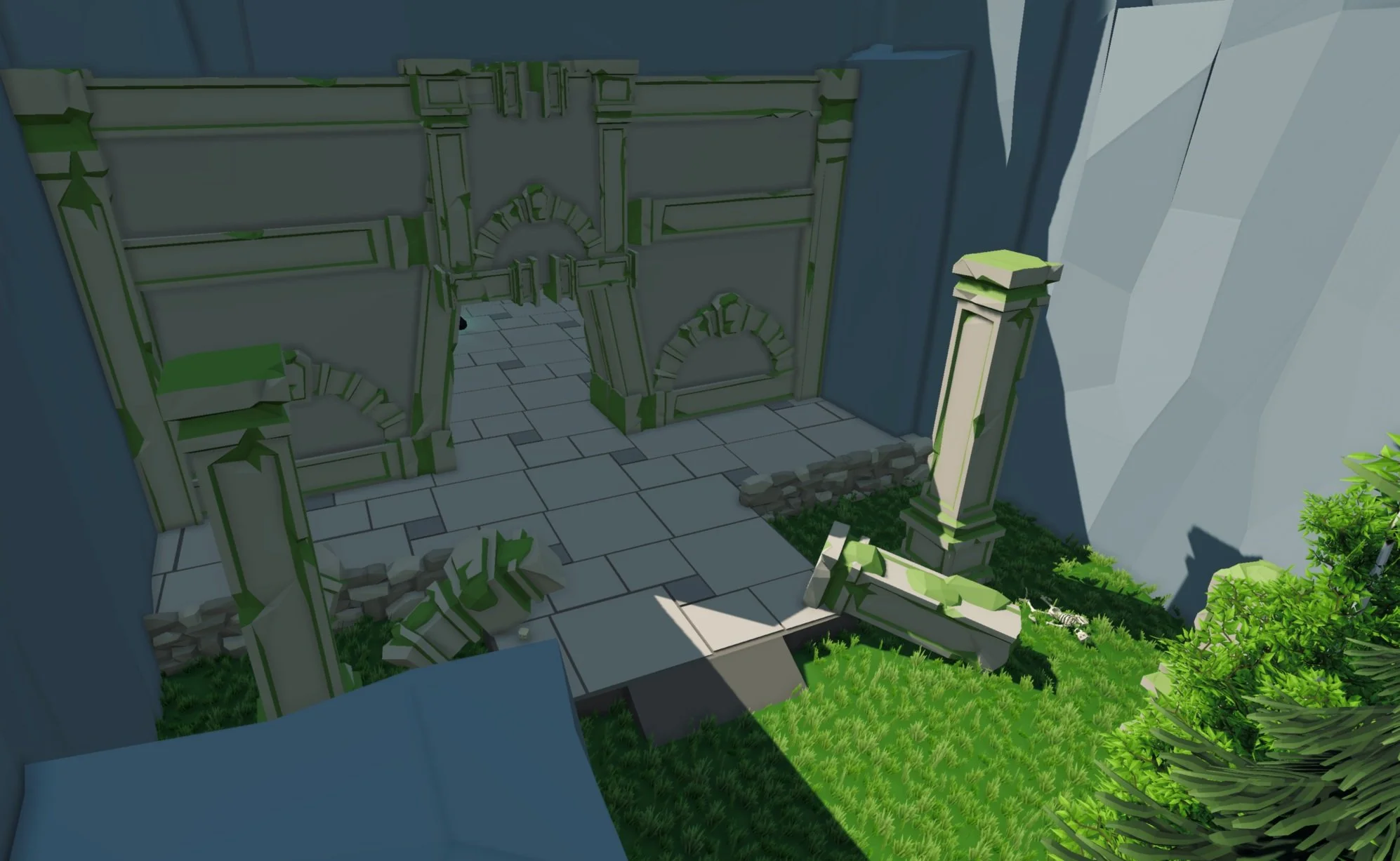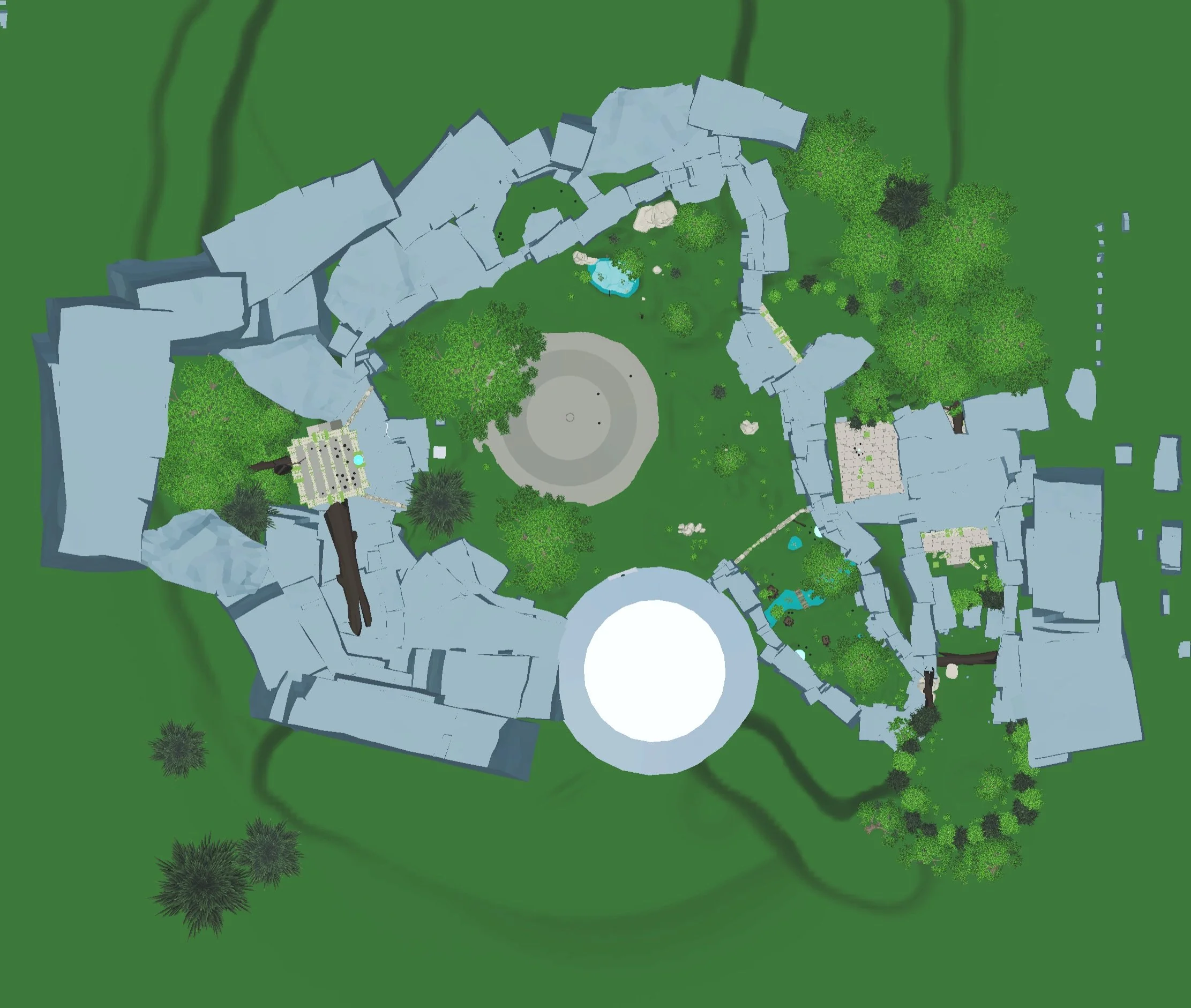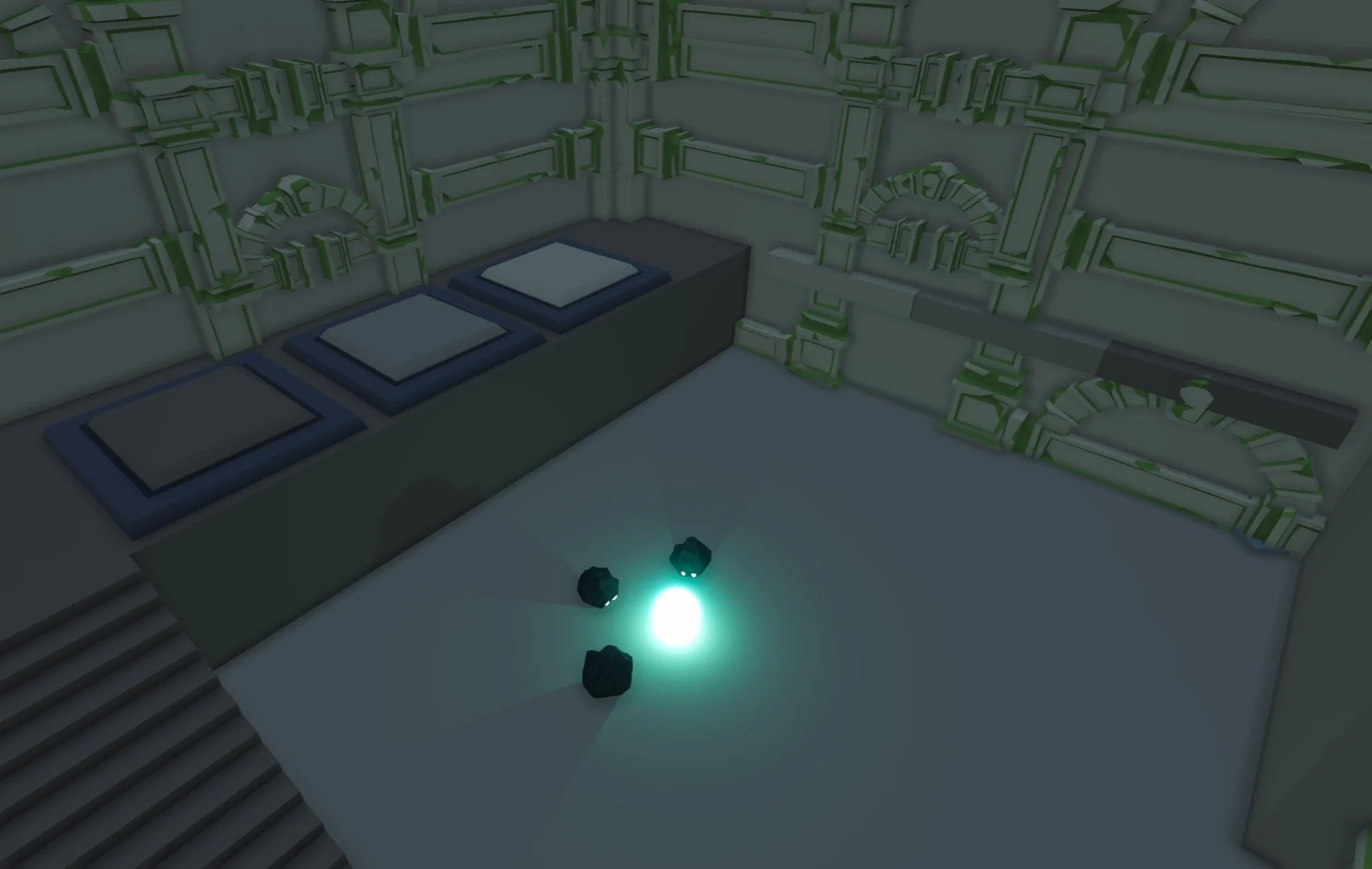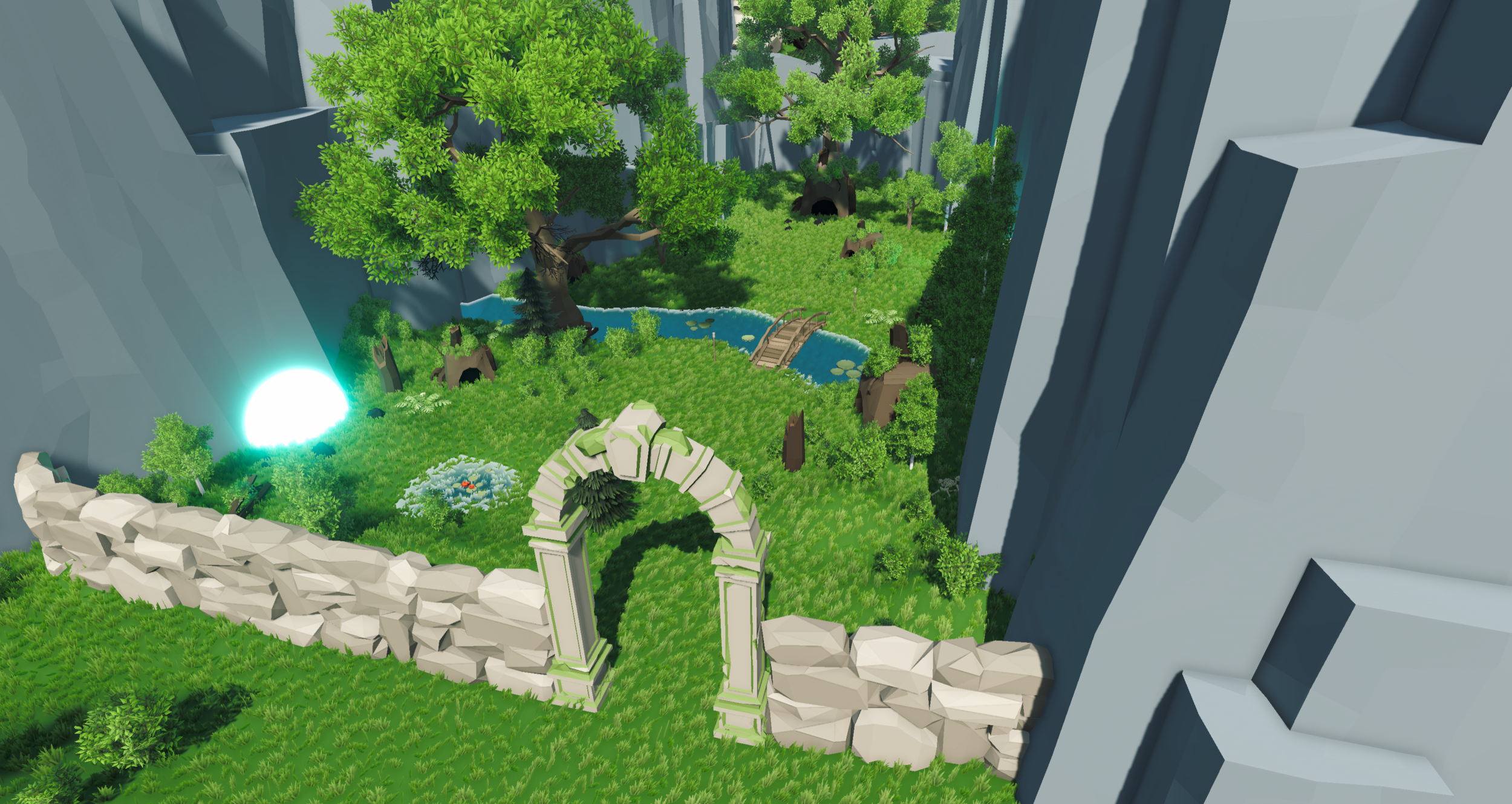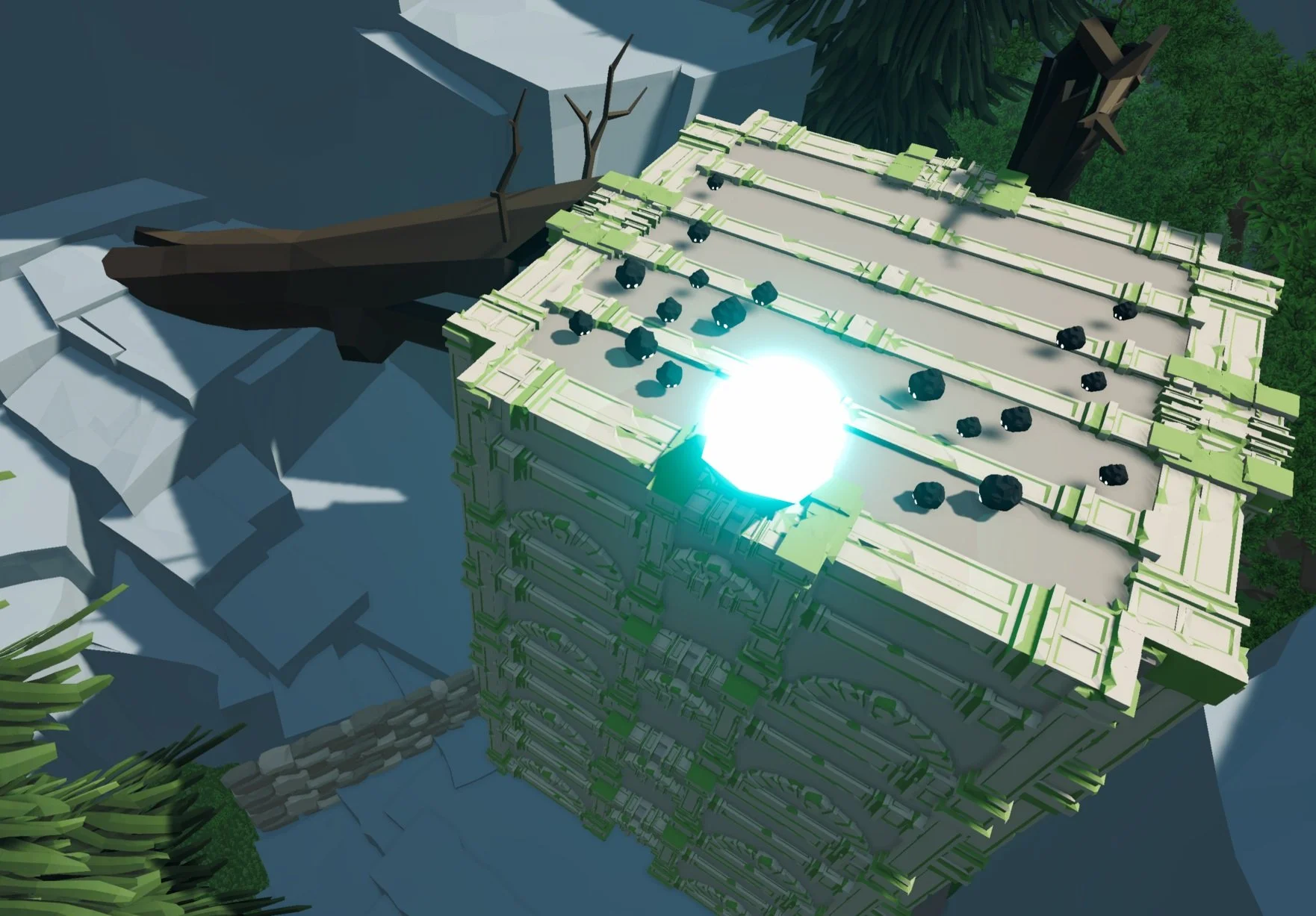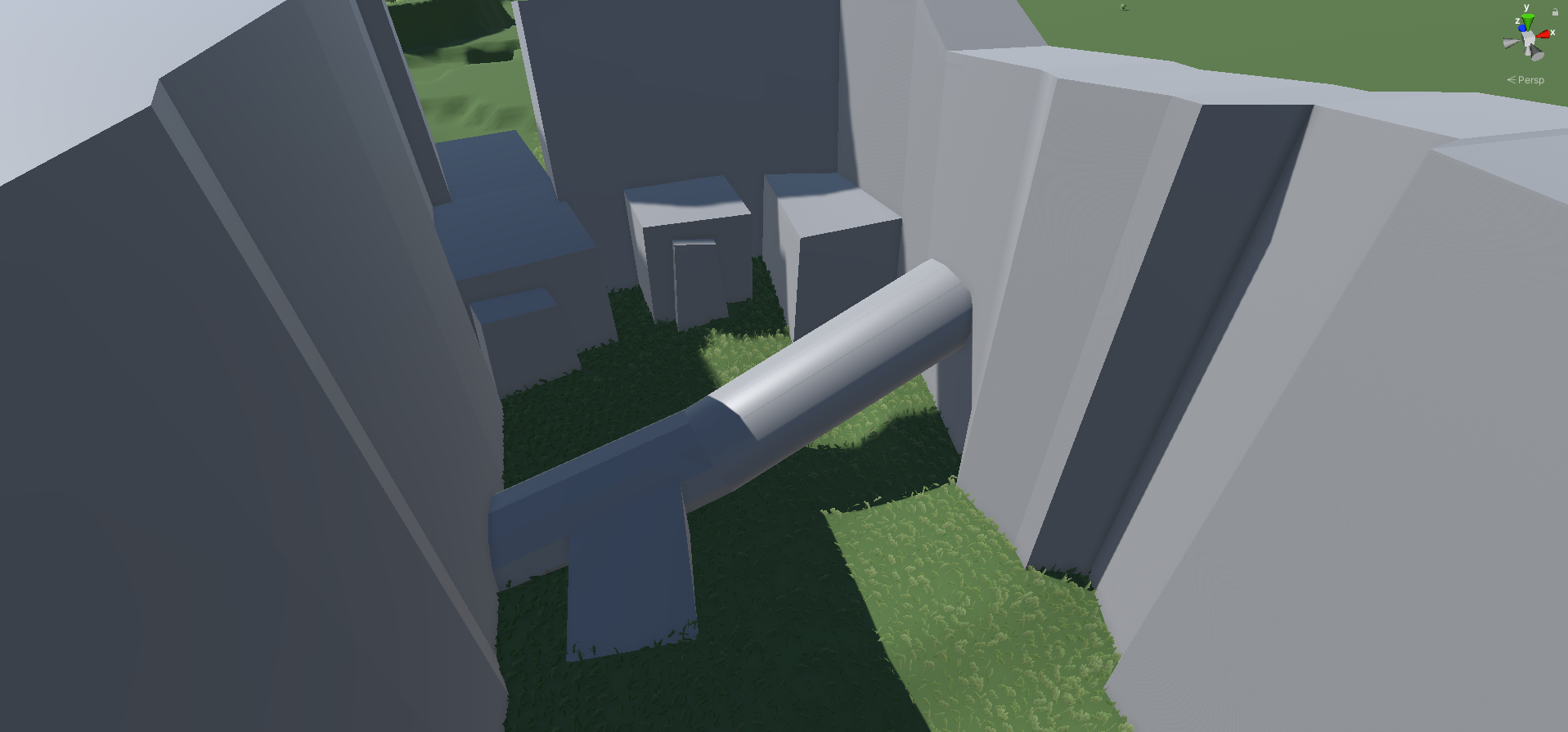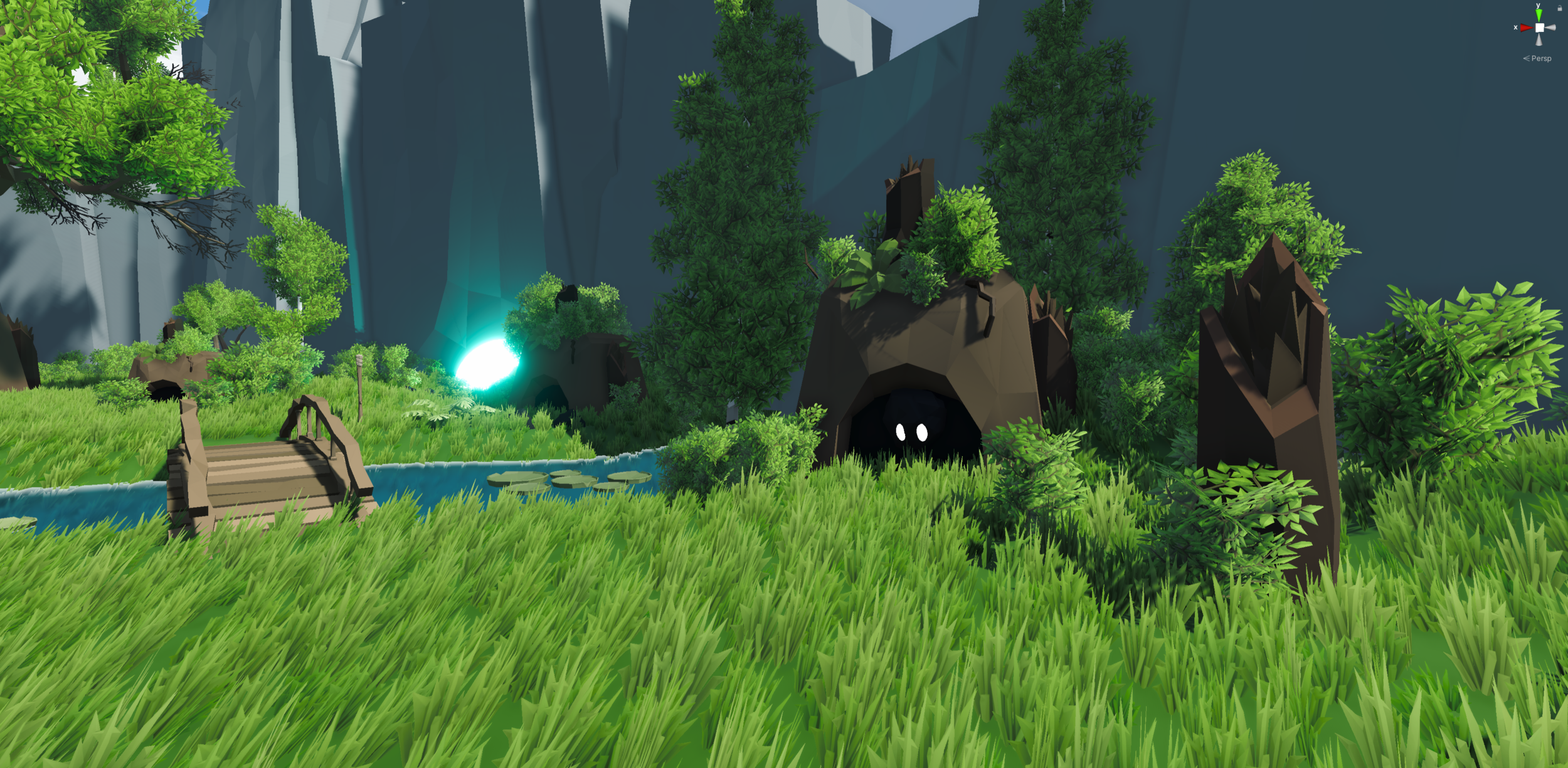
RiME Level Design
Complete level design process for a level designed to fit into the game RiME.
Roles (Solo Project): Level Design, Gameplay Scripting, Game Design
Tools: Unity, Adobe Illustrator/Photoshop
Timeline: 4 Months
Design Challenge
Given by Sheridan College:
Create a level for an existing, published game that would fit into the rest of the levels of the game.
Deliverables:
Create a complete Level Design Document for the level containing everything from references to final maps
Produce a playable level in the game engine / in-game editor of your choice with enough functionality for one round of play
Full Gameplay Video
My Work on the project
AAA Level Design Process: Concepted, documented, designed, prototyped, play tested, and implemented a complete level for an existing game and it’s mechanics.
Documentation: Compiled annotated references, created diagrams illustrating location connections, level pacing, map layout, etc.
Level Design / Greybox: Brought level concept to a 3D, playable, and easily adjustable state with Unity and Unity ProBuilder
Implementation of Gameplay: Custom scripted all gameplay interactions and elements using C#. I also built a custom character controller that was used in this project, more details can be found here.
First Pass Art: Using purchased assets, I established the look and feel of the level to the point it can be understood and polished by an art team.
The Design Process
Annotated Map With Golden Path
1. Analyze
To start this project, I first needed to understand what makes a successful RiME level. To do this, I analyzed the opening area of the game.
I played through the level multiple times, in multiple ways, to understand how the level leads the player with an invisible golden path. I also found that the level succeeded in letting the player play the level at their own pace, supplying lots of optional areas with collectibles and world-building to find.
Each level in RiME also features a unique creature or some other being that the player must interact with. These creatures also help convey the emotion of each level, as each section of the game is based on a stage of grief.
I also used beatmaps to analyze the pacing and progression of the golden path. I analyzed the gameplay variety, difficulty, and chance of death over the course of playing along the golden path.
Beatmaps
2. Concept
Theme - Guilt
Expanding on Rime’s theme of each level representing a stage of grief, Guilt embodies a common emotion when dealing with grief and one that would be very present in the story of Rime.
Narrative
The boy awakes in the middle of a forest clearing. As he explores, he discovers a world that seems to be built for humans. The architecture feels slightly Mayan with geometric shapes and stone being very prevalent. The boy quickly discovers that this area has been inhabited by a friendly species of tiny, fluffy creatures. These creatures help the boy solve puzzles as he leads them around with glowing orbs that they seem to follow. The boy eventually realizes that these orbs can be used as a power source, and that a lot of it is needed to power the exit. The boy looks up and sees a huge ball of light on top of a nearby temple. That ball seems about the right size to power the exit.
3. Prototype
Building a playable 3D Greybox
This stage involved a lot of playtesting and modification of the level to ensure that navigation of the level was effortless and to tune the difficulty of the puzzles and their order.
The level underwent some significant changes during this process such as combining 3 separate puzzle areas into one puzzle tower and converting the old puzzle spaces into optional, world-building areas to explore.
Using Beatmaps
I was able to use and update my beatmap to visualize and ensure a strong flow of progression, gameplay variety, and puzzle intentions while iterating on the level layout.
4. Implement
Art Pass
Once the design was polished, I worked with asset packs I had purchased to build out the level and get it to a near-shippable state.
Optional Areas
There are 2 optional areas containing collectibles for the player to explore. These areas work to meet the goals of multiple player types:
Just the campaign-er - This player just wants to complete all of the base requirements to complete the level. This player can ignore the side areas and head straight towards the puzzle temple.
Completionist - This player wants to find every collectible hidden throughout the world. These players can explore the side areas thoroughly to find the hidden collectibles.
Explorer - This player wants to take their time and explore the world. The open HUB section of the level gives them lots to explore and the side areas provide them with a bit of word-building if they want to try to piece it all together.
World Building
While building the scenery, I found lots of opportunities to visually communicate some of the mysterious backstory of the world.
Collision Mesh
To optimize the space for gameplay, I created a collision mesh that is separated from the visuals of the level. This ensures that the space functions properly and according to the design, without needing to worry about the varying and inconsistent colliders of the modular pieces.
Gameplay
Collision Mesh
Take Aways
Experienced building a level for an existing game project, similar to coming on to a project mid-way through development.
Use landmarks, lighting, and leading lines to aid player navigation.
Design around character metrics.
Maintain high-quality documentation through pre-production until release.
Use beat maps to visualize and design level progression.
Playtest often and don’t be afraid to make sweeping changes.
Use visual communication and attention to detail in levels to make the world feel real.







